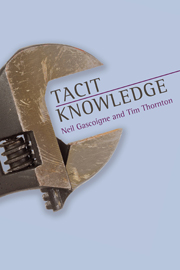Conclusion
Summary
In this book, we have outlined a conception of tacit knowledge as context-dependent, conceptually structured, practical knowledge. We have taken as two key clues Polanyi's early emphasis on the importance of personal knowledge as “active comprehension of things known, an action that requires skill” and his slogan that we can know more than we can tell. Tacit knowledge is practical knowledge or know-how. Further, in some sense at least, it resists being put into words. Respecting this second element is more difficult than the first, however, because of a dilemma that an account of tacit knowledge faces.
Any plausible account of tacit knowledge must respect its status both as tacit and as knowledge. But if one addresses the former by adopting what we called the principle of inarticulacy and assuming that there are states of subjects that are cognitive but which are not articulable, then one makes a mystery of how such states should count as knowledge. What is the content of such knowledge? For that reason, we have defended a view of tacit knowledge according to which it does have a content, but not one that can be captured in context-independent or purely linguistic terms. The articulation of the content requires practical demonstration. But, following late-twentieth-century developments in the philosophy of language and thought, this does not imply that the content lies outside the space of concepts.
- Type
- Chapter
- Information
- Tacit Knowledge , pp. 191 - 192Publisher: Acumen PublishingPrint publication year: 2013



